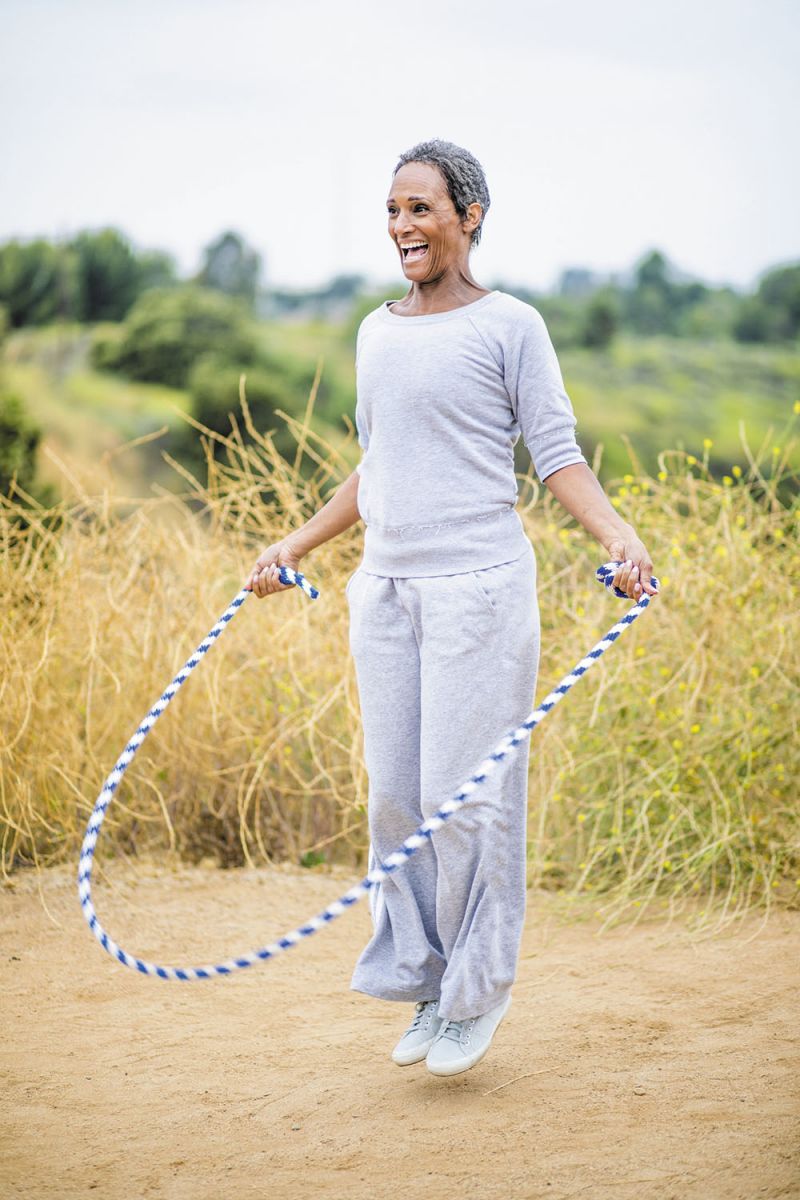High-Impact Exercise Benefits
"The difference in bone mineral density observed between runners and cyclists appears to be attributed to the differences in mechanical strain exerted on the skeleton by gravitational forces."
Norwegian study observation
"Whole bone mineral density values follow a decreasing order for volleyball, soccer, field hockey, water polo, swimming, synchronized swimming and controls."
Study of elite swimmers
| sportpoint/Shutterstock |
According to the Participation Report Card on Physical Activity for Children and Youth, 2020 -- of five- to 17-year-olds in Canada, 39 percent only meet physical activity recommendations. Boys were twice as likely as girls, and children age five to eleven were 1.5 times as likely as youth between ages 12 to 16, to meet exercise guidelines, Statistics Canada reveals. Children and youth are encouraged to follow exercise guidelines of 60 minutes of moderate-to-vigorous physical activity, plus several hours of light physical activity each day.

And nor are the young the only ones who should be engaged in healthy exercise routines on a regular basis. Adults too, known to give too little time to physical activity as indicated by the 16 percent who do make the effort for the recommended 150 minutes of moderate-intensity exercise weekly. Of all the possible investments in health, remaining active on an ongoing basis meets the challenge. It really begins in childhood, the need to engage in healthy physical exercise, and sustain that enthusiasm throughout one's life to ensure a lifetime of healthy bones.
What begins in childhood ends in adulthood and the elderly years. Research has indicated that children who are normally physically active have eight to ten percent greater hip bone density later in adulthood, in comparison to sedentary counterparts. Half of the gains in bone size and one-third of improvements in bone strength is acquired in the early years between childhood and the teen years, and that early strength remains, accompanying the individual throughout life.
 |
Adulthood exercise maintains good bone strength and health that has been acquired in the first two decades of mature development that began in childhood. Preventing or delaying osteoporosis, the progressive weakening of the bones of the human skeleton is an ongoing exercise in good health to preserve the bone density and strength attained earlier in life. To maintain good bone health, exercises promoting muscle size and strength also does the same to bone.
When muscle gains, so does bone mass; loss of muscle leads to a decrease in bone mass. Muscle contractions and ground forces stimulates bone health. Weight training and weight-bearing exercises; walking, running and jumping, are vital in maintaining bone health. And what research has also revealed is that swimming and cycling, non-impact, non-weight-bearing exercise lack the capacity to meet bone-health targets.
 |
| Study’s findings suggest that serious cyclists might want to consider at least sometimes branching out in their fitness routine. |
The Norwegian study compared bone density of male and female elite road cyclists to male and female middle- and long-distance runners, finding that cyclists possessed significantly lower bone mineral density. In a study of elite swimmers, a similar situation was discovered, that the swimmers possessed lower bone density measurements in comparison to non-aquatic elite athletes.
 |
High-impact, high-intensity and multi-directional exercises are superior to moderate-intensity exercise in building and maintaining strong bones, according to an increasingly large body of research.
Labels: Adulthood, Bone Health, Childhood, Exercise, Senior Years

0 Comments:
Post a Comment
<< Home